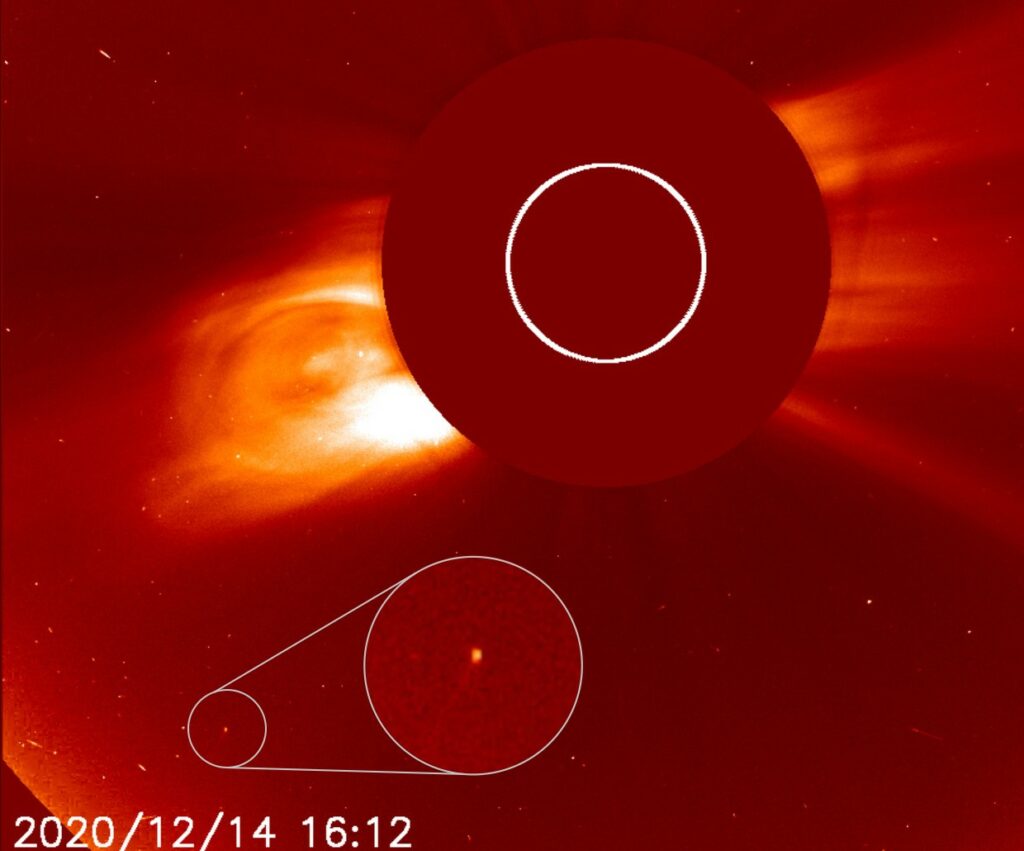An amateur astronomer discovered a new sungrazer comet during last week’s solar eclipse, NASA reports. The body has been christened C/2020 X3 (SOHO).

Image credits: ESA/NASA/SOHO.
Sungrazing comets are like their brethren in every way except they pass very close to the Sun, sometimes within a few thousand kilometers of its surface. C/2020 X3 (SOHO) has been discovered by Worachate Boonplod on December 13 (a day before the eclipse) as part of the Sungrazer Project — a citizen science project which allows the public to look for comets in images from the Solar and Heliospheric Observatory, or SOHO.
New old comet
The sungrazer belongs to the Kreutz family of objects, NASA explains, which are the fragments of a larger comet that broke apart around one millennia ago. C/2020 X3 (SOHO) evaporated on approach towards the Sun, but other grazers still orbit around our star, the agency adds.
During its last moments, the comet was traveling at around 450,000 miles per hour, reaching as close as 2.7 million miles from the star’s surface. It was about 50 feet (15 meters) in diameter and disintegrated into dust on approach.
“But wait!”, you might say — “what eclipse?”. Last week saw the last eclipse of 2020, which was visible from a relatively narrow region in the Pacific, southern South America, and Antarctica. People in Chile, Argentina, and communities living in the southern Atlantic and Pacific oceans could see it as a total eclipse.
This is the 3,524th Kreutz sungrazer spotted by SOHO. None have yet been seen to actually hit the star, as they burn away in the lower corona (the Sun’s atmosphere) or pass around 31,000 miles (50,000 kilometers) away from its surface. SOHO works similarly to a solar eclipse, NASA adds, which is why it’s so good at spotting sungrazers. The telescope uses a solid disk to block out light coming in directly from the Sun, letting us analyze its dimmer atmosphere and close-by objects.


